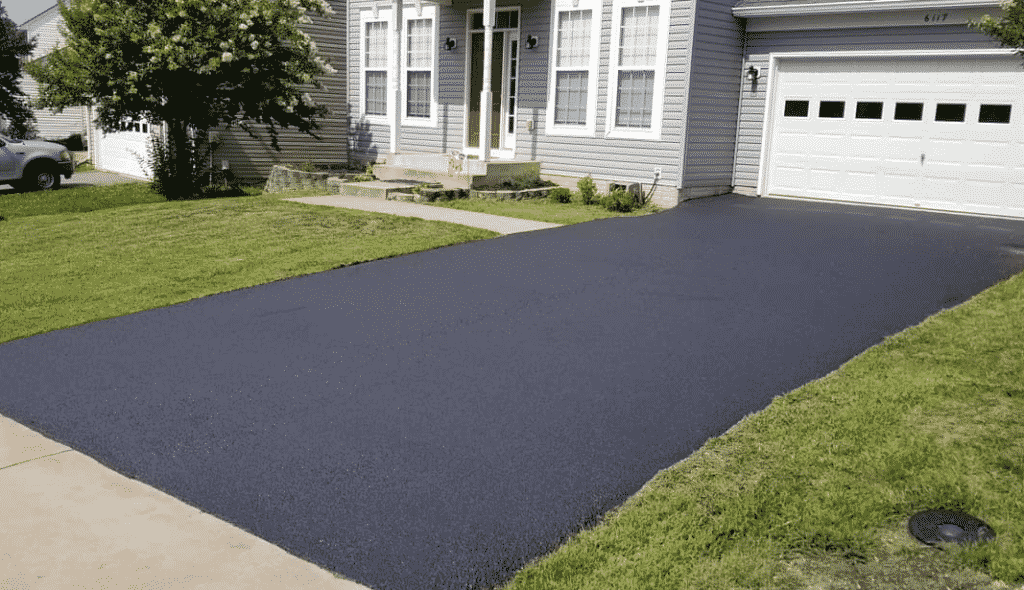Optimize Investment Returns: Angled Car Park Perfection with Asphalt Sealing
Optimize Investment Returns: Angled Car Park Perfection with Asphalt Sealing
Blog Article
Warm Mix Asphalt: A Lasting Solution for Sidewalk
Warm Mix Asphalt (HMA) has actually become a leading sustainable choice for pavement options, offering a myriad of ecological advantages and ingenious modern technologies. Its ability to decrease and recycle materials energy consumption offers an engaging case for its adoption in road building and construction projects. The long-term efficiency and durability of HMA make it a preferred choice for facilities growth. As the demand for green building methods expands, checking out the subtleties of HMA's sustainability can provide important understandings right into the future of sidewalk services.
Environmental Benefits of Hot Mix Asphalt

Moreover, Hot Mix Asphalt helps to mitigate urban heat island impacts. Its dark shade absorbs sunlight, decreasing the quantity of warm showed back right into the environment compared to lighter-colored pavements. This can reduce ambient temperatures in metropolitan locations, decreasing the demand for a/c and ultimately reducing energy intake.
Additionally, Warm Mix Asphalt contributes to enhanced stormwater monitoring. Its permeable nature allows water to penetrate the sidewalk and reenergize groundwater materials, lowering overflow and the risk of flooding. These ecological benefits make Warm Mix Asphalt a lasting option for paving roadways and highways.
Energy Performance in HMA Manufacturing
Is power efficiency a vital element in the manufacturing of Hot Mix Asphalt (HMA)? Absolutely. Power plays a substantial function in the manufacturing of HMA, affecting both price and ecological sustainability. One essential element of power performance in HMA production is using warm mix asphalt (WMA) modern technologies (regrading). WMA enables for the blending and placement of asphalt at lower temperature levels compared to standard hot mix asphalt, causing minimized energy usage throughout manufacturing. This process not just decreases gas usage yet also reduces greenhouse gas emissions, making it an extra eco-friendly option.
Additionally, innovations in plant modern technologies have led to more energy-efficient HMA manufacturing procedures. By optimizing energy use in HMA manufacturing, the sector can reduce its carbon footprint while preserving premium sidewalk products.
Recyclability of Hot Mix Asphalt
The recyclability of Warm Mix Asphalt (HMA) is a critical facet of its sustainability and lasting ecological Get More Information influence. HMA is among one of the most recycled materials in the United States, with over 100 million lots of reclaimed asphalt pavement (RAP) being reused yearly in new sidewalk construction. Recycling HMA offers several environmental advantages, such as minimizing the requirement for virgin materials, lowering power consumption during production, and reducing the amount of waste sent out to land fills.
The procedure of recycling HMA includes crushing the existing pavement, squashing it into smaller sized pieces, and mixing it with new accumulation and asphalt binder to produce a recycled mix. Generally, the recyclability of HMA plays a significant function in advertising sustainable techniques within the pavement market.

Long-Term Efficiency of HMA
Asphalt pavements show resilience and strength over a prolonged period, reflecting the lasting efficiency of Hot Mix Asphalt (HMA) The longevity of HMA can be credited to its capability to stand up to hefty website traffic loads, extreme climate condition, and the impacts of aging. Studies have revealed that well-designed and correctly constructed HMA pavements can last for twenty years or more with regular upkeep. The key to optimizing the lasting efficiency of HMA lies in making use of high-quality products, complying with best practices in building, and applying effective upkeep approaches. Correct water drainage, routine evaluations, and prompt repairs are necessary for maintaining the architectural stability of HMA sidewalks over time. Furthermore, improvements in HMA modern technology, such as making use of polymer-modified binders and warm mix asphalt, have actually even more improved the resilience and durability of HMA pavements. By focusing on high quality construction and upkeep practices, HMA continues to show itself as a cost-efficient and lasting remedy for resilient sidewalk facilities.

HMA: Durability and Sustainability
Showing both longevity and sustainability, Hot Mix Asphalt (HMA) has actually become a keystone in the building of resilient sidewalk facilities - regrading. pop over here HMA's durability comes from its ability to stand up to hefty tons, severe weather, and high web traffic quantities, making it a trusted option for roadways, highways, and airport runways. The composition of HMA, which typically consists of aggregates, binder, and filler, plays a crucial role in enhancing its durability and resistance to tear and wear
Furthermore, HMA's sustainability depends on its recyclability and energy-efficient manufacturing procedure. The capacity to reuse recovered asphalt pavement (RAP) in new HMA mixtures reduces the need for virgin products and reduces the environmental impact of pavement building and upkeep. In addition, the power efficiency of producing HMA hinges on its reduced mixing temperature levels compared to various other sidewalk materials, causing lowered power intake and greenhouse gas exhausts.
Verdict
In verdict, hot mix asphalt (HMA) provides a lasting solution for pavement with its eco pleasant characteristics. HMA's recyclability, energy performance in production, and lasting durability make it an eco-friendly choice for road building and construction.
HMA is one of the most recycled products in the United States, with over 100 million heaps of recovered asphalt pavement (RAP) navigate to this website being reused annually in new pavement construction.The process of recycling HMA entails crushing the existing sidewalk, squashing it into smaller items, and mixing it with brand-new accumulation and asphalt binder to produce a recycled mix.Asphalt sidewalks show longevity and resilience over an extended period, reflecting the lasting performance of Hot Mix Asphalt (HMA) Furthermore, innovations in HMA modern technology, such as the usage of polymer-modified binders and warm mix asphalt, have actually additionally enhanced the durability and durability of HMA sidewalks. The capacity to recycle recovered asphalt pavement (RAP) in new HMA combinations decreases the demand for virgin products and minimizes the ecological effect of pavement building and construction and upkeep.
Report this page